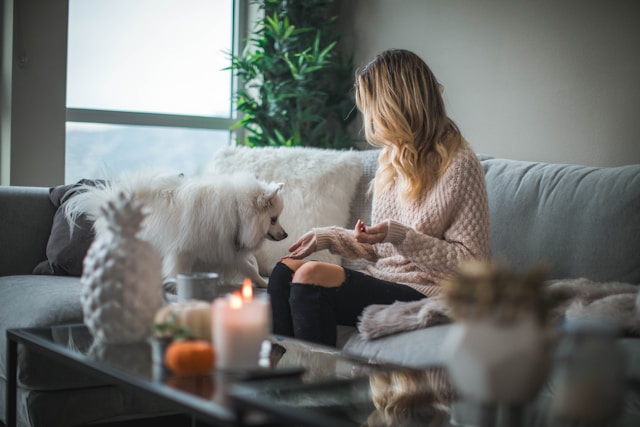While moving is an overwhelming experience for humans, it is more nerve-wracking for our beloved pets. Our furry friends are creatures who thrive in familiar surroundings. Therefore, when we decide to move to a new home, it is essential to prioritise their well-being and take steps to ensure a smooth transition.
Preparing Your Pet for the Move
The thing we need to do to help our pets adjust to the move is to prepare them mentally and physically. While moving house, It’s crucial to maintain their routine as much as possible in the days leading up to the big day. Even though we may be occupied with packing and other preparations, it’s important not to neglect quality bonding time with our companions every day.
Furthermore, if we plan on making any changes to their routine after the move. Such as altering feeding times or exercise patterns. It’s best to introduce these modifications before the actual move takes place. This way, they will have time to adapt slowly instead of experiencing sudden drastic shifts.
Getting Your Pet Comfortable in Their Carrier or Crate
Whether we’re travelling by car or plane, our pets will likely spend some time confined in a carrier or crate during the journey. To prevent stress and anxiety associated with this space, it’s crucial that we familiarise them with their containment area beforehand. To ensure a smooth transition for your pet on moving day, it’s important to introduce them to their carrier or crate beforehand. Place their bedding inside, along with toys and treats they enjoy. Encourage them gently to enter and exit the carrier voluntarily without forcing them. Additionally, try creating associations by incorporating activities like meal time or playtime near the carrier or crate on a regular basis.
Visiting The New Home Beforehand
Before the official moving day arrives, consider allowing your pet to explore their home in advance. If it’s within a distance from your residence, plan a few visits ahead of time. Take your pet for walks around the neighbourhood utilising pathways such as sidewalks or nearby parks that you may frequently visit once you’re fully settled in. This exposure will help them gradually become familiar with the scents, sights and sounds of their surroundings.
Designating a Safe Space
Once you’ve completed the move, it’s crucial to designate a space specifically for your pet. This could be their room or a specific area to which they can retreat when they need peace and quiet. Make sure this designated space includes their toys, as well as food and water dishes.
During the process of unpacking and getting settled in your home, there might be unfamiliar faces and loud noises that could easily overwhelm your pet. It’s important to create a designated space for them so they can feel secure while they adjust to their surroundings.
Establishing a Routine
Pets thrive on routine and familiarity, so it’s crucial to establish a schedule to help them settle into their home. As soon as possible, after moving in, try to get into the regular exercise and feeding routines that your pet is used to.

Consistency is key during this period of adjustment. Aim for the same meal times, showtimes and bedtime routines as before the move. The more familiar experiences surrounding their activities make it easier for your furry companion to adapt and feel comfortable in the new environment.
Seeking Professional Guidance
Sometimes, even with our best efforts, pets may still struggle settling in after a move. In such cases, it’s important not to lose hope but instead seek professional advice when necessary. Consider consulting with a veterinarian or working with an animal behaviourist who specialises in helping pets overcome stress or anxieties related to changes in their environment.
These experts can provide insights and personalised solutions tailored specifically to meet your pet’s needs. Don’t hesitate to ask for assistance if you notice that your furry companion requires support during this transition phase.
Conclusion
Moving is an anxiety-inducing experience, not only for us humans but also for our beloved pets. It’s crucial to ensure a transition as they adapt to their surroundings. By physically preparing your pet, familiarising them with their carrier or crate, visiting the home beforehand, creating a safe space for them, establishing routines and seeking professional guidance when necessary, you can make the moving process less stressful for your furry friend.
Remember, patience and understanding are key during this adjustment period. With planning and consideration, you can help your pet navigate the changes and start off on a positive note, in your new home together.
- 3shares
- Facebook0
- Pinterest3
- Twitter0


